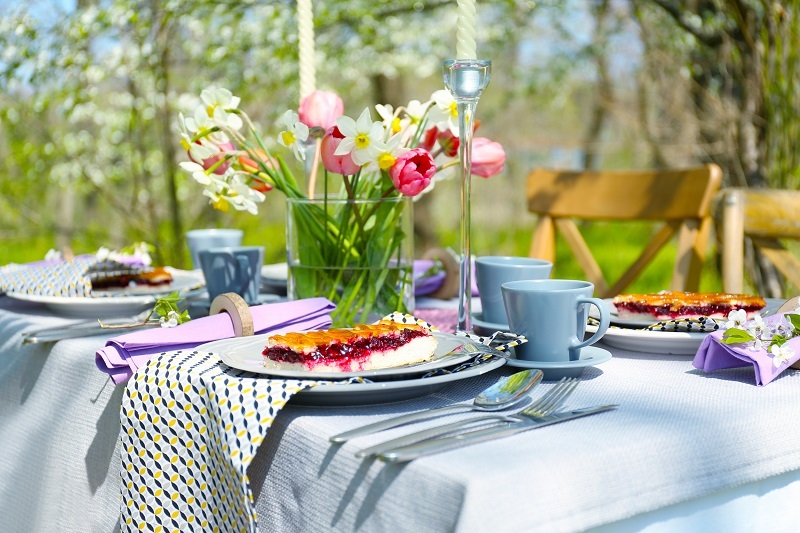Achieve Orchid Perfection with This Care Guide
Posted on 26/08/2025
Achieve Orchid Perfection with This Care Guide
Orchids have captivated gardeners and plant lovers for centuries with their stunning beauty, exotic shapes, and vibrant colors. While their reputation for being finicky may scare off some, with the right guidance, you too can achieve orchid perfection right at home. Whether you're an experienced indoor gardener or a complete beginner, this detailed orchid care guide covers everything you need to know for growing healthy, thriving orchids that blossom year after year.
Understanding Orchids: Diversity and Charm
Orchids are among the most diverse plant families on earth. With over 25,000 species and countless hybrids, they range from tiny, fragrant miniatures to grand, flamboyant blooms. Most cultivated orchids such as Phalaenopsis (Moth orchids), Dendrobium, Cattleya, and Oncidium are surprisingly resilient if given the right care.
- Phalaenopsis (Moth Orchids): Most popular choice for beginners, boasting long-lasting flowers and simple care requirements.
- Dendrobium: Diverse in appearance and relatively easy to maintain when their basic needs are met.
- Cattleya: Known as the "Queen of Orchids," with large, fragrant blooms--ideal for more experienced growers.
- Oncidium: Sometimes called "dancing ladies" orchids for their frilled blooms and active shapes.
Why Choose Orchids?
If you're looking for a plant with year-round appeal and breathtaking blossoms, orchids are unmatched. Their exotic beauty, symbolic meaning of elegance, and air-purifying attributes make them a premium addition to any home or office. By following the right orchid care techniques, you can enjoy these remarkable flowers season after season.

Essential Orchid Care: The Secrets to Thriving Plants
Achieving orchid perfection begins with understanding their fundamental requirements. Here's a comprehensive breakdown of the orchid care essentials that will put you on the fast track to success.
1. Optimal Lighting
Light is perhaps the most crucial factor in successful orchid cultivation. Most orchids favor bright, indirect sunlight. Phalaenopsis orchids, for example, do best with filtered light, such as an east- or west-facing window adorned with sheer curtains. Too much direct sun can scorch their delicate leaves, while too little can prevent flowering.
- Tip: A healthy orchid leaf should be bright green, not dark green (too little light) or yellowish/red (too much light).
- Light Hours: Aim for 12-14 hours of light daily, using grow lights in the winter if natural light is insufficient.
2. Proper Watering Techniques
A significant challenge in orchid care is watering. Orchids have evolved to survive with minimal water, often growing on trees in rainforests where their roots are exposed to air.
- Watering Frequency: Most orchids prefer to dry out between waterings. For Phalaenopsis, water once a week; in drier conditions, twice a week may be necessary.
- The Soak-and-Drain Method: Thoroughly saturate the potting medium, then let all excess water drain away. Never let orchids stand in water, as this can cause root rot.
- Best Water: Use room temperature, filtered water if possible. Rainwater is ideal.
Pro Tip: Stick your finger about an inch into the potting medium. If it feels dry, it's time to water.
3. Humidity
Orchids, particularly tropical varieties, adore humidity. Maintaining humidity levels between 40 and 70% is vital for their overall well-being. Low humidity can cause buds and flowers to drop prematurely.
- Group orchids together, which increases local humidity as they transpire.
- Use a humidity tray: Place a layer of pebbles in a shallow tray filled with water beneath your orchid pot. The evaporation moisturizes surrounding air.
- Mist the leaves lightly, but avoid standing water on foliage and flowers to prevent rot and fungal diseases.
4. Airflow and Temperature
Orchids require both good airflow and temperature regulation to flourish.
- Temperature: Most common home orchids like Phalaenopsis thrive between 65-80?F (18-27?C) during the day and 55-65?F (13-18?C) at night. A slight temperature drop at night actually encourages blooming!
- Air Circulation: Ensure fresh, gentle air movement around your orchids using a small fan. This helps reduce diseases and helps roots breathe.
Choosing the Perfect Orchid Pot and Medium
Why Potting Matters
Unlike most houseplants, orchids don't grow in soil. Their roots need a well-aerated medium and a pot that drains extremely well.
- Best Orchid Pots: Choose pots with multiple drainage holes. Clear plastic pots allow you to monitor root health.
- Potting Mix: Use a coarse, chunky orchid mix made up of bark, perlite, charcoal, and sometimes sphagnum moss. These ingredients emulate the orchids' natural growing conditions.
- Repotting: Repot every 1-2 years in the spring or after flowering. Watch for roots growing out of the pot, overcrowding, or degraded potting medium.
How to Repot Orchids
- Carefully remove the orchid from its pot, gently shaking off old potting medium.
- Trim away dead or mushy roots with sterilized scissors.
- Place the orchid in fresh orchid mix, ensuring roots have room to breathe.
- Water sparingly for the first week after repotting to allow roots to adjust.
Nutrient Needs: Orchid Fertilization for Perfect Blooms
Orchids need feeding, but less than you may expect. Over-fertilization can actually harm your plant. The golden rule for orchid fertilization is: "Feed weakly, weekly."
- Type of Fertilizer: Use a balanced orchid fertilizer (20-20-20) or one specifically formulated for orchids.
- Feeding Frequency: Once a month, flush the pot with plain water to remove salt buildup from fertilizers.
- Bloom Booster: Switch to a higher phosphorus fertilizer (look for "bloom booster" formulas) during the budding and blooming season to encourage prolific flowers.
How to Encourage Orchids to Bloom
Nothing matches the excitement of coaxing a reluctant orchid to bloom. Follow these tips for optimum flowering:
- Maintain a Temperature Drop: Many orchids need a 10-15?F (5-8?C) difference between day and night for several weeks to initiate spiking.
- Sufficient Light: Insufficient light is the most common reason orchids don't flower. Increase light if leaves are very dark green and no bloom spikes are appearing.
- Don't Overwater: Too much water during dormancy can prevent flower spikes from forming.
- Fertilize Correctly: Shift to a bloom-boosting fertilizer when spikes appear.
Common Orchid Problems & Solutions
Even with the best care, orchids can sometimes develop problems. Here's how to tackle common issues:
Yellowing Leaves
- Overwatering is the most frequent cause. Ensure pot drains well.
- Natural Aging: Older leaves will naturally yellow and fall off.
- Light Issues: Too much direct sunlight can cause spots or burning.
Root Rot
- Caused by poor drainage or standing water. Repot in fresh orchid mix and remove affected roots.
Pests
- Aphids, spider mites, and mealybugs can infest orchids. Remove with neem oil or a mild insecticidal soap.
No Flowers
- Increase light exposure and provide a cool night period.
Brown Leaf Tips
- Often a sign of low humidity, salt buildup, or inconsistent watering. Adjust your care routines accordingly.
Seasonal Orchid Care
Orchid care evolves throughout the year. Understanding these seasonal tweaks can help you achieve ongoing orchid perfection.
Spring/Summer
- Orchids may need more water as temperatures and growth rates increase.
- Budding and flowering typically occur in the spring.
- Increase fertilization frequency to match growth surges.
Autumn/Winter
- Reduce watering as the plant's metabolism slows.
- Many orchids rest during this period--don't force feeding or flowering.
- Use grow lights if natural light dwindles in your location.
Orchid Display and Home Styling Tips
Orchids can grace any room with elegance when styled creatively. Here's how to showcase your perfect orchids:
- Grouping: Display a cluster of different orchid species for a lush, botanical effect.
- Vessels: Use designer ceramic or glass pots to complement your decor.
- Height and Layers: Mix tall and short orchids for an eye-catching arrangement.
- Functional Placement: Bathrooms and kitchens, with their higher humidity, can be ideal homes for orchids.
Advanced Orchid Perfection: Propagation and Breeding
Ready to elevate your orchid mastery? Try propagating your plants:
- Keiki propagation: Some Phalaenopsis and Dendrobium orchids produce "keikis" (baby plants) on their flower spikes. Wait until the keiki has several roots, then carefully cut and pot it separately.
- Division: Large, mature orchids like Cattleyas can be divided at repotting time. Ensure each division has several healthy pseudobulbs and roots.
Orchid Breeding
Hybridizing orchids is a specialty for advanced enthusiasts. Cross-pollinate flowers manually, then harvest and sow seeds in sterile culture to create entirely new orchid hybrids!

Frequently Asked Questions About Orchid Care
- How often should I water my orchid? - Once a week is typical, but frequency varies based on humidity, temperature, and your specific orchid species.
- When should I repot an orchid? - Every 1-2 years, or when roots outgrow the pot or potting medium degrades.
- Can orchids grow outside? - Many can thrive outdoors in frost-free conditions with bright shade and protection from heavy rain.
- Why are my orchid leaves wrinkled? - Usually a sign of underwatering or root problems. Inspect roots and adjust your care routine.
Your Journey to Orchid Perfection Starts Now
With a touch of knowledge and consistent care, orchid perfection is within your reach. These elegant, enchanting plants can grace your home with beauty and harmony for years to come. Follow this comprehensive orchid care guide, and you'll inspire envy in fellow plant lovers and enjoy the unmatched delight of healthy, blooming orchids.
Unlock the full potential of these magnificent blooms--and transform your indoor gardening experience. Happy growing!
Latest Posts
Tulips Uncovered: 7 Surprising Facts to Enhance Your Knowledge
Achieve Orchid Perfection with This Care Guide
Surprising truths about sunflowers that are not commonly found







